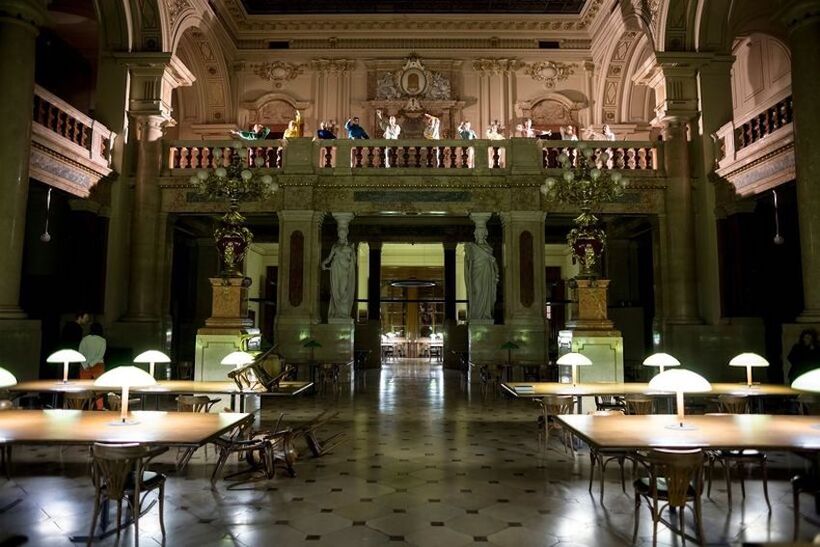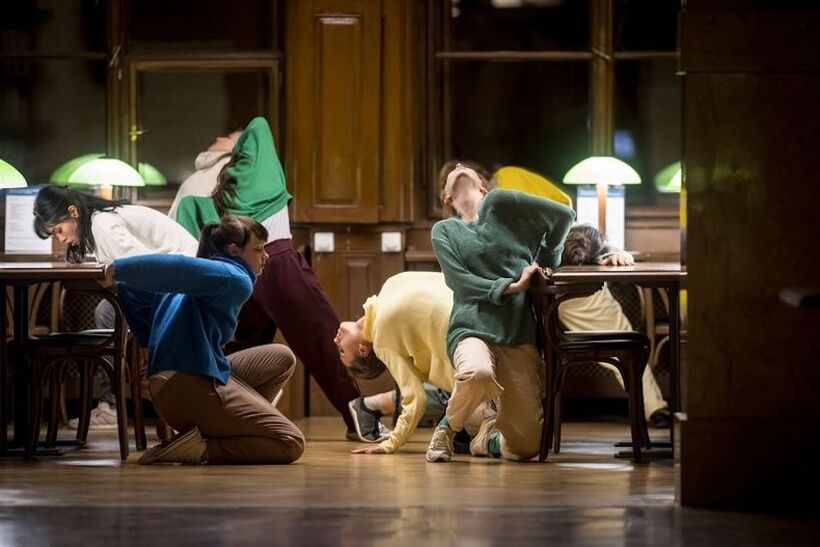Let's Connect Yesterday – A Piece Of Hope In Times Of Crises
The work by Miřenka Čechová, Markéta Vacovská and Alice Koubová, Let's Connect Yesterday, deals with the theme of crisis and adaptation to it. The year-long collaboration between the authors, performers and the Academy of Sciences of the Czech Republic culminated at a time when the word crisis is attacking us from all media channels - energy, economic, climate and, in the worst case, a creeping crisis of social reconciliation. Not only did they manage to capture this theme brilliantly, but they also offered a way out and hope.
The project of the three women is urgently topical in its timing. I dare say that almost everyone in times of uncertainty is looking for ways to relate to the crisis, to orient themselves in it, to place it in the context of their lives and in the "big history". The refreshing inclusion of philosopher Alice Koubová in the production played an excellent role in this, not just as a mere appendage or addition to the performance, but as an integral part of it.
In the first half of the work, only the dancers perform, taking advantage of the broken spaces of the reading room of the Academy of Sciences, emerging from behind various columns and corners. There is no music to accompany their movements, which go from a very slow walk to a sprint. They function like an organism or a society, where each unit works autonomously, but at the same time responds to the others, and thus the whole system is kept running. They can be a parallel to almost any biological but also social system, which ensures its balance by various means, in short, to survive.
As the performance progresses, the voice of Jakub Železný, the presenter of Czech Television, comes over the loudspeakers, announcing the development of one crisis or the onset of another. His voice mixes with that of other presenters on Czech and foreign television, creating a noise in which individual words are lost, but arousing anxiety, like the chaos that can arise in our heads from the overload of disturbing and fragmentary information available online. The use of news clippings to illustrate historical events or crisis situations may be a cliché not only in theatre but also in film, for example, but given that the other elements of the production have been handled in an original way, this is only a marginal complaint.
During the television announcement that signals the onset of the crises, the dancers sit at the tables of the reading room and choreograph the iconic green table lamps, which they turn on and off again, creating an impressive "dance of light". Their colour may, perhaps unintentionally, evoke a climate crisis. The sweaters worn by the dancers, in turn, are a reminder of how some government officials say citizens are supposed to fight the energy crisis this year.
Soon the dancers move to the back of the reading room and the audience slowly follows them. The openness of the space and the ability to move around relatively freely and without shyness during the performance is another pleasant aspect of the production. In the smaller separate room, the dancers begin to sort of collapse, falling to the ground and approaching the entrance portal as the crisis reaches its peak. At this stage they are joined by the philosopher Koubová. In the portal, the dancers gradually hold each other in an amorphous tangle, their social cohesion helping them to withstand the crisis. But when one link loosens, the whole endeavour unravels...
The performers return to the free space of the reading room and repeat similar dance sequences as in the first half of the performance. Koubová also joins in with her lecture on resilience, the ability to adapt to crisis situations, their importance in human life, ways to deal with them, and resilience as a strength that can be activated in times of crisis. It also highlights something that can easily be misrepresented in a performance-oriented society - that resilience is not a competition, and it is not about who can last the longest. For example, who turns the heating down to the lowest temperature in the living room.
Koubová skilfully joins in the choreography. When she speaks of adaptation, she rocks on the edges of the legs of the chair she sits on, stepping out of her comfort zone and balancing, as is necessary when trying to adapt to changed conditions. The dancers gradually join her in exploring the movement boundaries on the chair legs, exploring the possibilities in the changed conditions. The philosopher's speech is reassuring and hopeful. Unfortunately, she encounters the poor acoustics of the reading room, and so she is almost unintelligible from some places.
The collaboration of Čechová, Koubová and Vacovská shows how fruitful the dialogue between science and art can be. At the same time, it confirms that both the humanities and social sciences, as well as the arts, are crucial for illuminating complex social processes and orientation in today's world. Despite people who claim otherwise and refer to the philosophy faculty in a derogatory way as a hatchery for employees of fast-food chains. Especially in times of crisis, we need arts and sciences that contextualize events and help us navigate them so that in a few years we are not surprised by the radicalization of society or the breakdown of social cohesion. I think that the production of Let's Connect Yesterday and the collaboration between the Academy of Sciences and the artists shows this path perfectly.
Written from the performance on 20 September in the library of the Academy of Sciences of the Czech Republic.
Let's Connect Yesterday
Concept, direction: Markéta Vacovská, Miřenka Čechová, Alice Koubová
Music: Matouš Hekela
Movement collaboration: Kristýna Šajtošová
Dramaturgical collaboration: Martina Kinská
Performers: Eduard Adam Orszulik, Andrej Lyga, Eliška Benešová, Tereza Petrová, Viktória Pejková, Michaela Stará, Huyen Vi Tranová, Alica Minar, Kateřina Jabůrková, Aneta Bočková, Daniela Kolková, Simona Rozložníková
Visual artists: Debora Štysová, Martiv Hrvol





